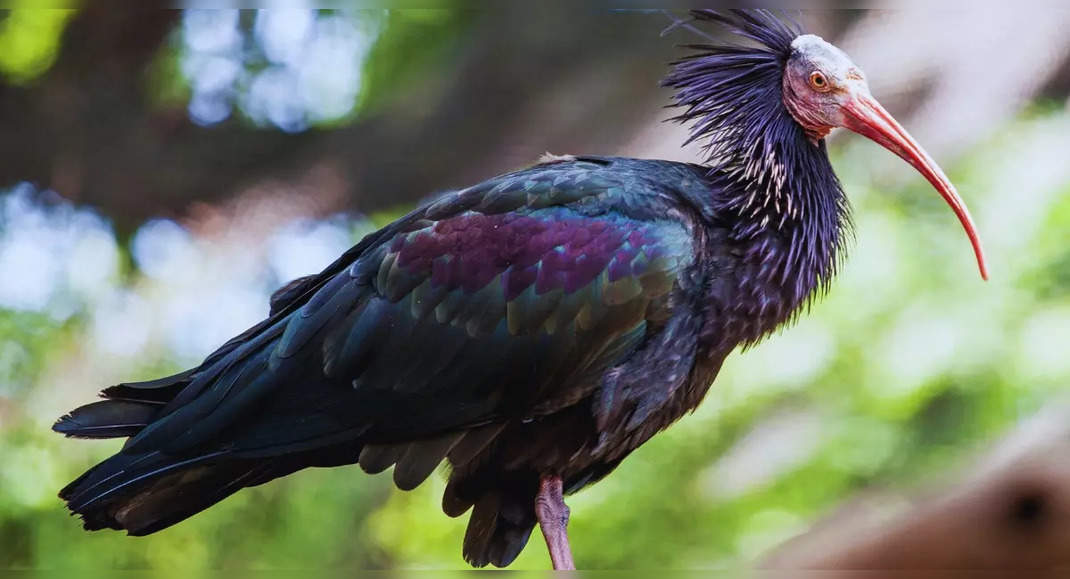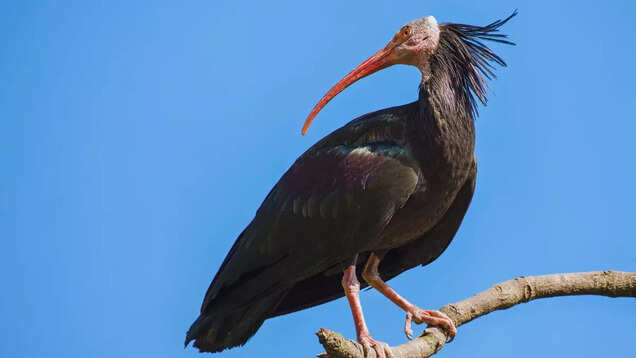Bird species make remarkable return to European skies after 300 years

In a remarkable turn of events, the northern bald ibis, once thought extinct from Europe, returns to the European skies after three centuries.
It’s interesting to note that the northern bald ibis once played symbolic roles in ancient cultures. For instance, in ancient Egyptian culture, the hieroglyph for the northern bald ibis represented akh, meaning “spirit.” And according to local legends from the Birecik area in Turkey, the northern bald ibis was the first bird to fly out of Noah’s Ark, symbolising fertility.
Fast forward to the 20th century, the northern bald ibis population plummeted to a state of near extinction, thanks to hunting, habitat destruction, and the use of pesticides. At one point, there were only 59 breeding pairs in total, as per a report in CNN. And before all this, these birds were abundant in North Africa, the Arabian Peninsula and central Europe. Over time, the bird’s presence was limited to Morocco.Despite the species’ near-extinction, conservation efforts have sparked a recovery, with the northern bald ibis now showing signs of resurgence both in Morocco and across parts of Europe.
Also read: Last Chance tourism: The trend that is pushing people to visit destinations likely to disappear
In Morocco, the Souss-Massa National Park provided these birds the much-needed safe ground for breeding and feeding. It’s because of these initiatives, today, the wild population of the northern bald ibis is over 500 individuals, and they are no longer classified as Critically Endangered. Their new status as an Endangered species is, believe it or not, a significant milestone both for the species and the conservation efforts.

Remarkable comeback in Europe
Recently, thanks to the reintroduction programmes in Spain’s Andalusia, the northern bald ibises were successfully returned to the European wild. This reintroduction programme began in 2004 where these birds were hand-reared by human ‘parents’. and gradually released into their natural habitat.
Also read: Barren but beautiful: 8 driest spots on Earth that lure travellers and adventurers
As per a report in Guardian, in Austria and Germany, a unique program led by Austrian biologist Johannes Fritz is helping to restore the migratory population of northern bald ibises. Since the birds raised in captivity lack the knowledge of migratory routes, Fritz and his team guide the birds using an ultralight aircraft. The team has taught the birds to follow this aircraft, leading them from Germany to southern Europe. Recently, the migration route has been adjusted to end in Spain due to environmental changes.
Related
The pretty European country that’s an English speaker’s dream
Brits visiting Norway's stunning fjords can rest assured they’ll have no trouble communicating, as the country was ranked second globally for English proficie
Italy Secures Top Accolades for Luxury and Innovation at European…
Saturday, November 23, 2024Italy has once again proven its dominance in European luxury hospitality, securing top honors at the European Hotel Awards 2024. The
Switzerland remains the European leader in rail travel
This week, ahead of a vote to decide whether to expand the nations roads, LITRA, an organisation championing public transport in Switzerland, published its ann
Vilnius Steals the Spotlight as European Christmas Capital 2025 –…
Vilnius has officially been named the European Christmas Capital for 2025, a prestigious title awarded by the Christmas Cities Network.This recognition highligh











